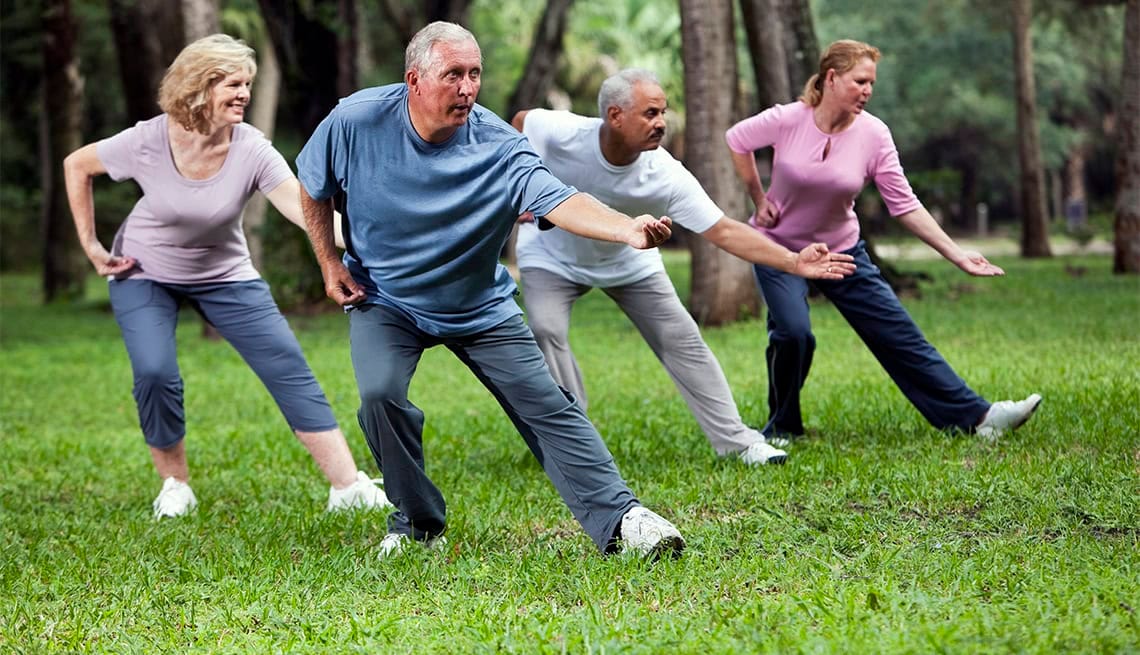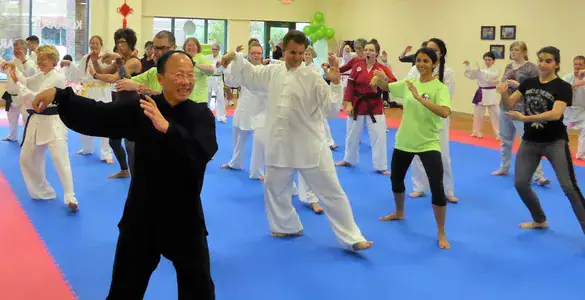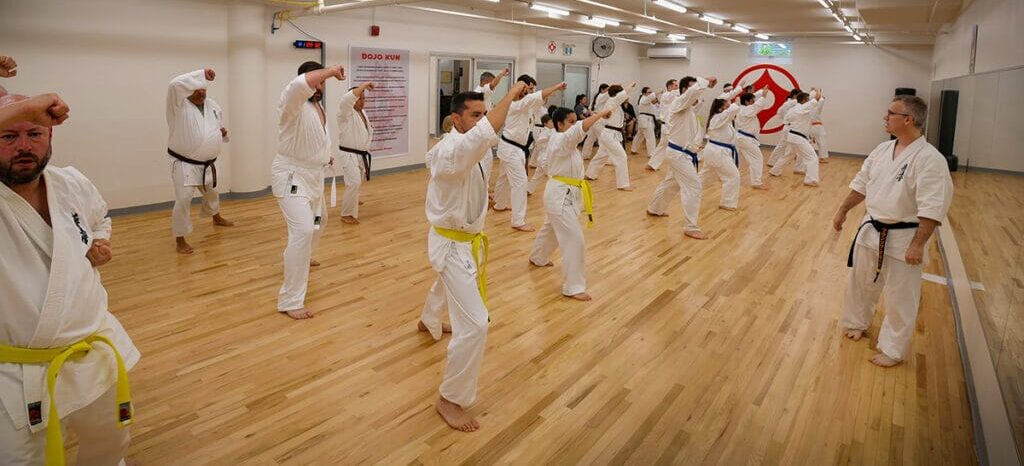In my four decades of martial arts training, I've witnessed firsthand how the practice can transform lives across all age groups. Low impact martial arts offer a remarkable path to fitness, mental clarity, and self-defense skills without the physical toll associated with more combative styles. These gentler disciplines provide accessible entry points for anyone looking to begin their martial journey—whether you're in your 50s or beyond, recovering from an injury, or simply seeking a more mindful approach to movement.
The beauty of these systems lies in their focus on technique and leverage rather than brute force. As an Aikido instructor who began training as a teenager, I've guided countless students—many over 50—through the rewarding process of discovering martial arts later in life.
Finding the right style can be challenging when mainstream martial arts culture often emphasizes competition. Many prospective students wonder: what is the best martial art to learn when your body requires gentler approaches? Which disciplines maintain effectiveness while protecting joints?
This guide will introduce you to the most accessible low-impact martial arts, explain their benefits, dispel common myths, and provide practical tips for getting started regardless of your current fitness level.
Best Low-Impact Martial Arts Styles
[Alt text: Senior martial arts practitioner demonstrating graceful Tai Chi movements in a park setting with proper form and balance]
When seeking gentle martial arts training that's kind to your joints while still building real skills, several disciplines stand out. Based on my experience, these systems offer the best balance of accessibility and effectiveness.
Tai Chi
Tai Chi stands as perhaps the quintessential low-impact martial art, characterized by flowing, continuous movements performed with deliberate slowness. As someone who's taught older beginners, I've seen remarkable transformations in students who commit to regular Tai Chi practice.
What makes Tai Chi particularly suitable for older adults or those with joint concerns is its emphasis on proper alignment and efficient movement patterns. The slow pace allows practitioners to develop profound body awareness while strengthening the muscles around joints rather than stressing them.
Research has found that regular Tai Chi practice improved balance, reduced fall risk, and enhanced quality of life among practitioners over 65—benefits I've repeatedly observed in my senior students.
Aikido
As an Aikido practitioner with decades of experience, I hold a special appreciation for this art's gentle yet effective approach. Aikido focuses on redirecting an attacker's energy rather than meeting force with force, making it one of the leading non-violent martial arts available today.
For students with mobility concerns or joint issues, Aikido offers several advantages: techniques rely on leverage and timing rather than strength; training can be adapted to different physical capabilities; and the emphasis on ukemi (falling safely) builds confidence in moving and transitioning to the ground—a crucial skill as we age.
Brazilian Jiu-Jitsu (BJJ) for Self-Defense
Though not traditionally categorized among slow martial arts styles, BJJ deserves mention as a surprisingly accessible option when practiced appropriately. Unlike its sport-focused competitive version, self-defense oriented BJJ can be gentle on the body.
BJJ revolves around ground-fighting techniques, leverage, and position rather than strikes. What makes BJJ valuable for older practitioners is its emphasis on technique over athleticism.
Helio Gracie, one of the most accomplished BJJ practitioners, noted: "J"Jiu-jitsu is personal efficiency to protect the weaker, which anyone can do. It is the force of leverage against brute force."
For older beginners, I recommend finding an instructor who specializes in self-defense applications rather than competitive aspects, and who understands how to modify training for different bodies.
Wing Chun
Wing Chun offers another excellent option within the spectrum of gentle martial arts. This Chinese system emphasizes economy of motion and directness. Its compact movements make it particularly accessible for those seeking non-contact martial arts training with real-world applications.
What makes Wing Chun suitable for older practitioners is its minimal reliance on high kicks or explosive movements. The foundational training—such as the first form (Siu Lim Tao) and Chi Sao (sticky hands) exercises—can be performed slowly while still developing genuine skill.
Benefits of Low Impact Martial Arts
Beyond self-defense applications, gentle martial arts offer profound benefits that extend into every aspect of health and well-being. Let's explore the most significant advantages, especially as you age.
Improves Balance & Coordination
Perhaps the most noticeable benefit for older students is the dramatic improvement in balance and coordination. This isn't surprising when you consider that martial arts training involves constantly shifting weight, maintaining stability through movement, and developing heightened body awareness.
Research published in BMC Sports Science, Medicine and Rehabilitation found that older adults who participated in regular martial arts training showed significant improvements in both static and dynamic balance compared to control groups. This enhanced stability directly correlates with reduced fall risk—a critical health factor as we age.
Enhances Joint Mobility & Flexibility
Contrary to what many believe, gentle martial arts training doesn't wear out joints—it revitalizes them. The controlled movements, especially in styles like Tai Chi and Qigong, create what practitioners often describe as "oiling the joints"—increasing synovial fluid production and maintaining range of motion.
A study demonstrated that older practitioners of Tai Chi maintained joint flexibility comparable to individuals 10-15 years younger. This preservation of mobility has profound implications for maintaining independence as we age. (International Journal of Sports Medicine, 2021)
For those concerned about arthritis, research from Tufts Medical Center found that low-impact martial arts practice actually reduced pain and improved function in participants with knee osteoarthritis.
Boosts Mental Sharpness
The cognitive demands of martial arts training create what researchers call "moving meditation"—a state that simultaneously calms the mind while requiring focused attention. This unique combination produces remarkable brain benefits.
A longitudinal study published in the Journal of Alzheimer's Disease found that regular Tai Chi practice was associated with increased brain volume in regions associated with memory and executive function. Participants also showed improved cognitive test scores compared to non-practitioners.
Reduces Stress & Anxiety
Perhaps the most universally reported benefit among my students is stress reduction. The physiological basis lies in the combination of rhythmic breathing, mindful movement, and complete mental engagement that characterizes martial arts training.
Research in the Journal of Affective Disorders found that regular Tai Chi practice reduced stress hormones and inflammatory markers while improving mood and sleep quality.
How to Get Started with Low Impact Martial Arts
Beginning any new physical practice can feel intimidating, especially for those concerned about age-related limitations. Having guided numerous students through this transition, I can assure you that with the right approach, martial arts training can be accessible regardless of your current fitness level.
Finding the Right Class or Online Program
Your experience will be primarily shaped by the quality of instruction and the school's culture. When researching options, look beyond general descriptions to understand the specific approaches and accommodations for different physical needs.
Start by observing classes before committing. Pay attention to the age range of students, the instructor's teaching style, and whether modifications are offered for different ability levels. A good indicator of a suitable school is seeing practitioners of diverse ages training together comfortably.
When speaking with potential instructors, be direct about your goals and any physical limitations. Their response will tell you much about their ability to accommodate your needs.
The American Tai Chi and Qigong Association and the Ki Society Aikido Federation offer directories of certified instructors, which can help identify qualified teachers in your area. Most but not all Biranki and United States Aikido Federation dojos study a harder, more brutal style of Aikido.
What to Expect in a Class
Understanding the typical structure of training helps reduce anxiety and sets realistic expectations. While each discipline varies, most classes follow a similar pattern:
- Warm-up exercises focusing on joint mobility
- Fundamental movement practice
- Technique instruction, demonstrated by the instructor
- Guided practice, either solo or with partners
- Cool-down and often some form of meditation
For beginners, the first few months typically emphasize basic movements rather than complex techniques. This foundation-building period is crucial—don't rush through it.
Most importantly, prepare for a learning curve. As with any complex skill, initial progress may feel slow. One of the more accomplished students, who began training later in life, often reminds newcomers: "I felt completely uncoordinated for the first three months. By six months, things started clicking. Now five years later, these movements feel like second nature."
Adapting Techniques for Individual Needs
One of the most beautiful aspects of low-impact martial arts is their adaptability. Throughout my teaching career, I've worked with students managing various conditions—from replaced knees to chronic back pain—and found ways to make training accessible.
Common adaptations include:
- Reducing stance height for those with knee concerns
- Modifying falling techniques for those with back issues
- Adjusting hand positions for practitioners with arthritis
- Using chairs for support during balance-challenging movements
A quality instructor will offer these modifications proactively or respond supportively when you request them. Never hesitate to ask for adaptations—this isn't "cheating" but rather intelligent training that respects your body's current capabilities.
Common Myths About Low Impact Martial Arts
Throughout my teaching career, I've encountered numerous misconceptions that prevent people—especially older adults—from exploring martial arts training. Let's address the most common myths.
Myth: "It's not effective for self-defense"
Perhaps the most pervasive myth is that gentle approaches lack real-world effectiveness. Having studied both high-impact and low-impact systems, I can confidently state that effectiveness depends far more on regular practice and proper instruction than on the intensity of training.
Rener Gracie, a renowned Brazilian Jiu-Jitsu instructor, illustrates this principle perfectly in his teachings: "The most reliable self-defense techniques are those that work with minimal strength and athletic ability—because in a real confrontation, against a larger opponent, that's exactly what you'll need.”
Myth: "You won't get a workout"
Many assume that slower martial arts won't provide cardiovascular benefits. In reality, sustained practice creates what exercise physiologists call "moderate-intensity sustained activity"—precisely the type most beneficial for overall health and longevity. Research from Harvard Medical School found that a 30-minute Tai Chi session burns approximately the same calories as walking at a moderate pace.
Myth: "What If I Have Arthritis or Joint Pain?"
Many potential students assume that joint issues disqualify them from martial arts training. Research published in the New England Journal of Medicine found that Tai Chi practice significantly reduced pain and increased function in patients with fibromyalgia—a condition characterized by chronic pain and stiffness.
The key lies in proper instruction that emphasizes correct alignment, gradual progression, and modifications that accommodate individual limitations.
Simple At-Home Martial Arts Exercises
While finding quality instruction provides the best long-term approach, you can begin experiencing the benefits immediately with these simple home exercises.
Gentle Tai Chi Flow
This simplified sequence captures the essence of Tai Chi's flowing movement:
- Begin standing with feet shoulder-width apart (or seated if standing is challenging)
- Raise both arms slowly to chest height, palms down
- Circle your hands outward, then draw them back toward your body. Imagine tension or resistance pushing against the hands as you move them. Creating a slight pressure, making it challenging to move them.
- Shift weight slightly to right foot while turning palms upward
- Reverse the weight shift while transitioning hands to opposite positions
- Repeat 3-5 times, focusing on continuous, flowing movement
Chair-Based Martial Arts Movements
For those with mobility limitations, these chair adaptations provide many benefits while ensuring stability:
- Sit toward the front edge of a sturdy chair with feet flat on floor
- Raise both hands to create a protective frame in front of your face
- Extend right hand forward in a controlled pushing motion while maintaining left hand in protective position
- Return to center position, then repeat with left hand
- Perform 5-8 repetitions on each side
Expert Tips for Progressing
Drawing from my decades of experience, I've identified key principles that separate successful long-term practitioners from those who struggle.
Start slow and focus on form
The single most important factor in successful martial arts progression is prioritizing proper form over speed. This principle becomes increasingly critical as we age, when movement patterns are more established and recovery takes longer.
"The slower you go, the faster you learn."
As the Japanese saying goes, This approach builds a solid foundation of body mechanics that transfers across different techniques and even different martial arts styles.
Practice regularly for the best benefits
The frequency of practice often matters more than the duration. Research in motor learning consistently shows that shorter, more frequent practice yields better results than occasional extended sessions.
For my older students, I recommend 15-30 minutes of daily practice rather than a single weekly class. This approach maintains joint mobility, reinforces neural patterns, and builds the habit of practice into your life routine.
Final Thoughts on Low Impact Martial Arts
After four decades in martial arts—as a student, practitioner, and teacher—I've witnessed countless transformations through the practice of gentle martial arts. These disciplines offer far more than simply "exercise appropriate for older adults"—they provide sophisticated systems for developing integrated physical capacity, mental clarity, and practical self-protection skills that remain accessible throughout life.
What makes low-impact martial arts particularly valuable is their holistic approach. Unlike many exercise systems that focus solely on physical development, these arts integrate physical training with mental discipline. They teach not just how to move but how to exist more harmoniously in your body and the world.
For those considering beginning their martial journey later in life, remember that these traditions were designed to be lifelong practices. Many revered masters continued refining their art well into their 80s. The journey begins with a single step—or in martial arts terms, a single stance.
Whether you're drawn to the flowing movements of Tai Chi, the circular redirection of Aikido, or any other gentle martial art, approach your training with patience, consistency, and curiosity. Find an instructor who understands your needs, practice regularly even if briefly, and trust the process of gradual development.

Frequently Asked Questions
What is the Best Martial Art for Someone Over 50?
Tai Chi and Qigong typically offer the gentlest entry points, with Aikido and modified Wing Chun also providing excellent options depending on your specific goals and physical condition.
How Often Should I Practice to See Benefits?
Brief daily practice (15-20 minutes) typically yields better results than longer, less frequent sessions. Consistency matters more than duration, especially when beginning.
Do I Need to be Flexible to Start Martial Arts?
Absolutely not. These practices develop flexibility gradually through regular training rather than requiring it as a prerequisite.
Can I learn martial arts online or do I need in-person instruction?
While in-person instruction provides optimal feedback and guidance, quality online programs can offer a solid introduction, especially for solo forms and fundamental movements.
Are these martial arts effective for self-defense?
Yes, though their approach differs from combat sports. They emphasize awareness, avoidance, and efficient technique rather than athletic prowess or pain tolerance.





